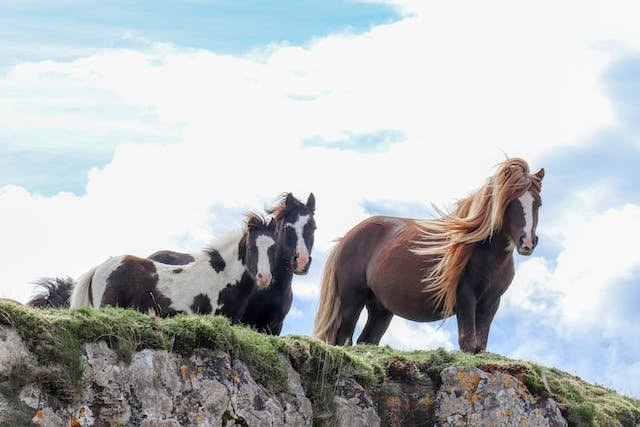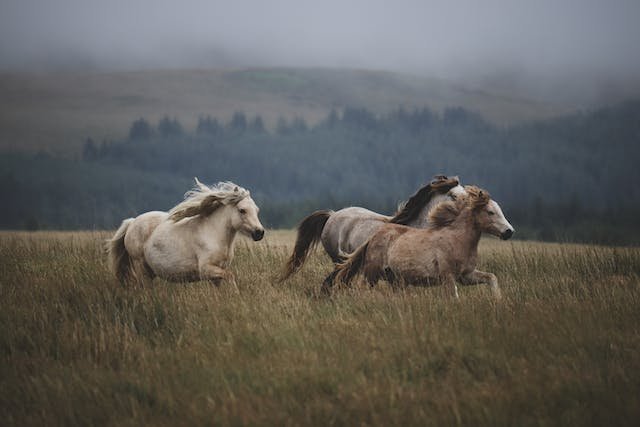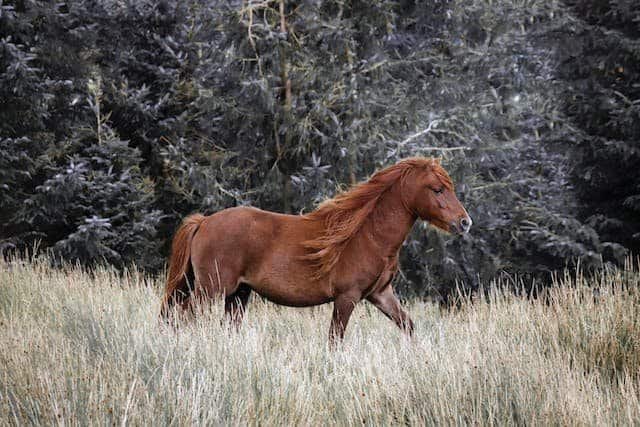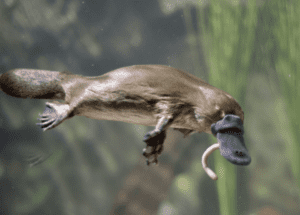Have you ever thought that Where Did Wild Horses Originate?, Long ago all horses were wild animals. Wild horses, also known as feral horses, have been a subject of fascination and curiosity for many years. They are often depicted in books, movies, and artwork as symbols of freedom and strength. But have you ever wondered where these magnificent creatures originated from?
Early horse know as the dawn horse originated in North America. They were a prairie animal along with the American Camel, Saber Tooth Tiger, and Wooly Mammoth. The American Horse is the only animal from that time period that is still alive today.
Table of Contents
Przewalski’s Horse
It is believed that the modern-day wild horses are descendants of a subspecies known as Przewalski’s horse. This species originated in Central Asia, specifically in Mongolia and China, and was first described by Russian explorer Nikolai Przhevalsky in 1881. For many years, it was thought to be the only true wild horse species left in the world.
However, recent DNA studies have shown that modern-day wild horses are not direct descendants of Przewalski’s horse. They belong to a different subspecies known as Equus ferus caballus and are thought to have originated from domesticated horses brought to North America by Spanish explorers.
Domestication and Release of Wild Horses
The history of wild horses can be traced back to around 5,000 BC when humans began domesticating horses. These horses were used for transportation, agriculture, and warfare. However, not all domesticated horses remained in captivity.
Throughout history, there have been instances where domesticated horses escaped or were released into the wild due to various reasons such as war or natural disasters. These horses adapted to their new environment and formed herds, thus becoming feral.
Where Did Wild Horses Originate? Spreading of Horse Across the World

As humans spread across the world, so did domesticated horses. They were brought to different continents and regions by explorers, traders, and colonists. Some of these horses were released or escaped into the wild and found suitable habitats in their new surroundings.
Today, wild horses can be found in various parts of the world, including North America, Europe, Asia, and Australia. Each region has its own unique breed of wild horses that have adapted to their environment over time.
Behavior of Wild Horses
Wild horses are highly social animals and live in herds consisting of several mares, their offspring, and a dominant stallion. They have a strong hierarchy within the herd, with the stallion being the leader and protector.
These horses usually roam in search of food and water, covering great distances on a daily basis. They have also been known to migrate to different areas depending on the availability of resources.
The Future of Wild Horses
Despite their widespread distribution, wild horses face many threats such as habitat loss, competition for resources with livestock, and conflicts with humans. It is estimated that there are only about 25,000 truly wild horses left in the world.
Conservation efforts are being made to protect and preserve these animals and their habitats. Organizations such as the Wild Horse Preservation Society work towards raising awareness and advocating for the protection of wild horses.
In conclusion, while Przewalski’s horse is believed to be the ancestor of modern-day wild horses, it is the domesticated horses brought by humans that have ultimately shaped their current existence.
Evolution of Wild Horses

From being domesticated animals to their release into the wild and adaptation to different environments, wild horses have come a long way. They continue to fascinate us with their beauty and strength and serve as an important reminder of our connection to nature. We must also remember their remarkable evolution and the journey that brought them to where they are today.
Distribution of Wild Horses
Today, wild horses can be found in regions such as the Great Plains of North America, the Australian Outback, and the Eurasian steppes. Each region has its own unique breed of wild horse that has adapted to its environment over time.
World and the challenges they face in their struggle for survival. By understanding their origins and evolution, we can better appreciate and protect these magnificent creatures for future generations to come.
Interaction of Human with Wild Horses
Human interaction with wild horses has greatly influenced their population and distribution. While some regions have seen successful conservation efforts, others continue to face threats such as overgrazing and capture for commercial purposes.
One of the key issues facing wild horses is competition for resources with livestock. As human populations grow, there is an increasing demand for grazing land, leading to conflicts between wild horses and livestock. This can result in the displacement or even death of wild horses.
Current Status of Wild Horses

Despite these challenges, wild horses have managed to survive and thrive in various habitats. In the United States, the Bureau of Land Management (BLM) manages the largest population of wild horses, with approximately 95,000 individuals spread across ten western states.
However, due to concerns over overpopulation and competition for resources, BLM conducts regular roundups and adoptions to control the wild horse population. This has been a controversial practice, with some advocating for more humane management methods.
The Importance of Protecting Wild Horses
As we continue to learn more about the origins and evolution of wild horses, it becomes clear that they are an integral part of our natural world. They play a crucial role in maintaining the balance of ecosystems and serve as a symbol of our connection to nature.
Therefore, it is important for us to work towards protecting and preserving these magnificent creatures. Through responsible management practices and conservation efforts, we can ensure the survival of wild horses for generations to come.
Final Thoughts
Wild horses have a rich history and have been present on our planet for thousands of years. They have adapted to various environments and are considered an integral part of many ecosystems.
The origins of wild horses can be traced back to Przewalski’s horse, but it is human involvement that has shaped their current existence. One thing is certain – these magnificent creatures hold a special place in our hearts and will continue to do so for generations to come.
Read Also: Why Were Horses Domesticated?





